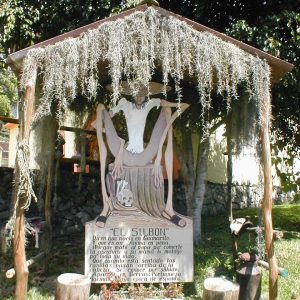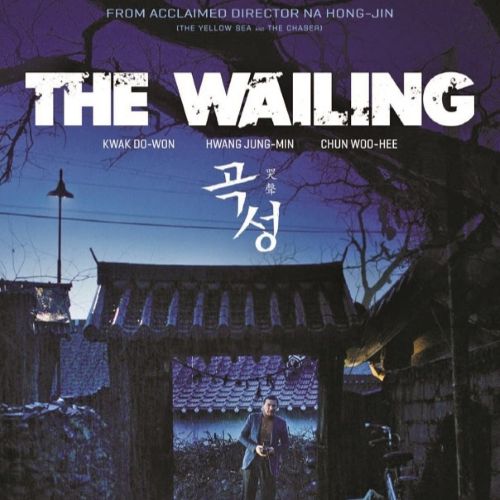El Silbon : The Whistling Phantom
| Description | |
|---|---|
| Origin | Venezuela |
| Classification | Humanoid |
| Demeanour | Neutral |
| Habitat | Rural & Urban areas |
| Status | Not Proved |

Introduction
El Silbón, or “The Whistler,” is one of the most frightening legends to come out of Venezuelan folklore, with a presence that also stretches into parts of Colombia. Originating in the Los Llanos, the wide open plains that dominate Venezuela’s central region, the legend tells of a restless spirit condemned to wander the earth. Known for his terrifying whistle, El Silbón has become more than a ghost story; he is a cultural symbol, a moral warning, and an enduring figure in the oral traditions of South America. While some see him as a supernatural punisher of vice, others view him as a tragic reminder of betrayal, family breakdown, and eternal guilt.
Physical Attributes
Accounts of El Silbón describe him as a towering figure, unnaturally thin and skeletal in appearance. His height varies in the stories, with some claiming he can reach up to six meters tall, casting a shadow that looms over the plains. He is usually seen in old, ragged farmer’s clothing, often with a wide-brimmed hat hiding his face. His most defining feature is the large sack he carries on his back, which is said to contain the bones of his murdered father or, in other versions, the bones of those he has killed since. The sound of bones rattling inside this sack is sometimes described by witnesses, amplifying the horror of his presence.
But what truly marks El Silbón is his whistle. The spectral sound he produces is unique, a sequence of seven notes that rise and fall in a chilling pattern. Folklore insists that the sound deceives the listener: if his whistle seems close, he is far away, and if it sounds distant, he is standing right beside you. This paradox adds to the fear and mystery surrounding his appearance, making him one of the most distinctive figures in Venezuelan mythology.
First Sighting/Reporting
The roots of El Silbón date back to the 19th century, when stories began to circulate in the Venezuelan plains. The legend’s core revolves around a young man who killed his father after an argument, often told as a dispute over food or hunting. As punishment, his grandfather cursed him to carry his father’s bones forever, banishing him to the plains for eternity.
Though there is no single documented “first sighting,” tales of El Silbón spread rapidly in rural communities, especially during the rainy season when superstition and ghost stories were strongest. Some versions link him to a real person named Joaquín Flores, who was rumored to have committed a similar crime in the mid-1800s. Regardless of whether the story has historical roots, El Silbón soon became a household legend in Apure, Barinas, and neighboring states, blending moral lessons with supernatural fear.
Other Names
While El Silbón is the most widespread name, variations exist across regions and countries. He is often called “The Whistler” in English translations, a direct reference to the ominous sound that announces his arrival. In some rural areas he is known as El Espanto Llanero (“The Phantom of the Plains”) or El Alma en Pena (“The Tormented Soul”), both names emphasizing his cursed and restless nature. In Colombia, where the legend is also told in the Llanos Orientales, he is sometimes referred to as El Silbador (“The Whistling One”), though the core story remains the same. These regional differences highlight the spread of the legend while keeping its central themes intact.
Modus Operandi
The way El Silbón operates is as chilling as his appearance. Folklore suggests that he preys on drunkards, womanizers, and those who stray from moral behavior. Drunken men are said to be his favorite victims—he supposedly sucks the alcohol from their navels and adds their bones to his sack. Womanizers meet a far more violent fate, with El Silbón tearing them apart before collecting their bones.
His whistle is not just a warning but a death omen. Hearing the sound near your home or while walking alone at night is considered a sign of imminent misfortune. Some stories claim that if you hear him counting bones outside your house and the sound continues, you are safe. But if the counting stops, it means someone inside the household will die before dawn.
Despite his terrifying nature, folklore provides protections against El Silbón. He is said to fear the sound of dogs barking, the crack of a whip, or the presence of chili peppers. In many rural households, dogs are considered guardians not just against thieves but also against spirits like El Silbón, reinforcing his role in local superstition.
Pop Culture References
El Silbón has moved beyond oral folklore and into modern culture, appearing in films, festivals, and even political rhetoric. In 2018, the Venezuelan horror film El Silbón: Orígenes was released, exploring his backstory in cinematic form. He has been the subject of illustrated series such as Fantasmagorías, which showcase Latin American myths and legends, ensuring his place in the wider canon of global ghost stories.
In Venezuela, his legend is celebrated at festivals that preserve Llanero traditions, with music, dances, and cultural references to El Silbón keeping the story alive. A statue dedicated to him can be found in the theme park La Venezuela de Antier, turning the terrifying specter into a tourist attraction. Even in politics, his name has been used metaphorically—most notably when Hugo Chávez referenced El Silbón in a 2003 speech to describe his adversaries, proof of how deeply rooted the legend is in the Venezuelan consciousness.
Current Status
Today, El Silbón remains one of the most enduring supernatural figures in Venezuelan and Colombian folklore. Though modern society is increasingly skeptical of ghostly encounters, his story is still told widely, especially in rural areas where oral traditions remain strong. Parents use the tale as a moral warning to children and young men, reminding them to avoid vices like drinking, infidelity, and disrespect for family.
In cities, the legend has adapted to new mediums. Social media platforms, YouTube channels, and podcasts frequently retell the story, often blending traditional details with modern horror storytelling techniques. For younger generations, El Silbón is both a piece of cultural heritage and a character in the growing Latin American horror genre.
The enduring popularity of El Silbón demonstrates the power of folklore to survive across centuries. He is more than a ghost story—he is a symbol of guilt, punishment, and the dangers of immorality. As long as the whistle is told of in stories, the legend of El Silbón will continue to haunt the plains of Venezuela and Colombia, reminding people that some tales are too chilling to fade away.
Source
El Silbón – Wikipedia. (2017, April 29). https://en.wikipedia.org/wiki/El_Silb%C3%B3n
El Silbón of Los Llanos in South America | Into Horror History. (2022, July 5). https://www.jahernandez.com/posts/el-silbon-of-los-llanos-in-south-america
Column: El Silbón, a Venezuelan Legend About the Ancestors. (2019, November 3). https://wildhunt.org/2019/11/column-el-silbon-a-venezuelan-legend-about-the-ancestors.html
The Legend of the Silbón , Reading on GatherTales. (2024, September 21). https://www.gathertales.com/en/story/the-legend-of-the-silbn/sid-452
El Silbón – Astonishing Legends. (2019, July 29). https://astonishinglegends.com/astonishing-legends/2019/7/29/el-silbn
Bonilla, V. S. (2024). The history behind El Silbón: Exploring historical and psychological elements to the urban legend. PANDION: The Osprey Journal of Research and Ideas, 5(1), Article 6. https://digitalcommons.unf.edu/pandion_unf/vol5/iss1/6
Garcia, J. (2024, September 20). The legend of the Silbón. GatherTales. https://www.gathertales.com/en/story/the-legend-of-the-silbn/sid-452
Hernandez, J. (2022, July 4). El Silbón of Los Llanos in South America. Into Horror History. https://www.jahernandez.com/posts/el-silbon-of-los-llanos-in-south-america
Klein, C. (2018, March 8). El Silbón de Venezuela. LinkedIn. https://www.linkedin.com/pulse/el-silb%C3%B3n-de-venezuela-craig-klein
Perez, L. (2023, August 23). The legend of El Silbón. Naturally Wicked Store. https://naturallywicked.store/blogs/news/the-legend-of-el-silbon
Rivera, M. (2019, November 2). Column: El Silbón, a Venezuelan legend about the ancestors. Wild Hunt. https://wildhunt.org/2019/11/column-el-silbon-a-venezuelan-legend-about-the-ancestors.html
Smith, A. (2023, October 7). El Silbón – Welcome to Grimming It Up. https://www.grimmingitup.org/el-silbon-urban-legend/









